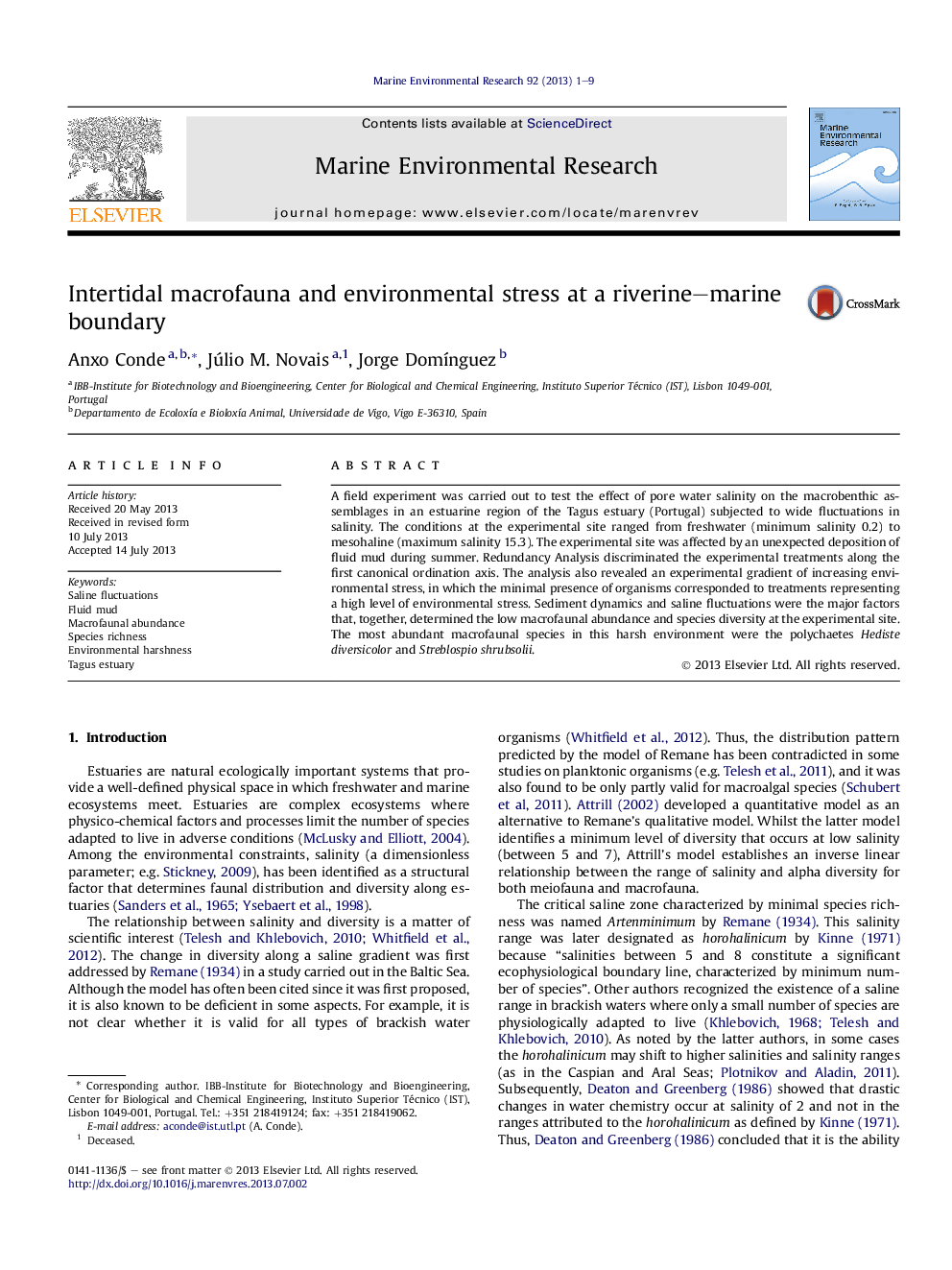| Article ID | Journal | Published Year | Pages | File Type |
|---|---|---|---|---|
| 6387848 | Marine Environmental Research | 2013 | 9 Pages |
â¢We conducted an intertidal experiment in transitional waters of the Tagus estuary.â¢Fluid mud was identified as a major stressor jointly with high saline fluctuations.â¢A much reduced number of species inhabited this part of the estuary.â¢The minimum of species richness was coincident with a minimum of macrofaunal abundance.
A field experiment was carried out to test the effect of pore water salinity on the macrobenthic assemblages in an estuarine region of the Tagus estuary (Portugal) subjected to wide fluctuations in salinity. The conditions at the experimental site ranged from freshwater (minimum salinity 0.2) to mesohaline (maximum salinity 15.3). The experimental site was affected by an unexpected deposition of fluid mud during summer. Redundancy Analysis discriminated the experimental treatments along the first canonical ordination axis. The analysis also revealed an experimental gradient of increasing environmental stress, in which the minimal presence of organisms corresponded to treatments representing a high level of environmental stress. Sediment dynamics and saline fluctuations were the major factors that, together, determined the low macrofaunal abundance and species diversity at the experimental site. The most abundant macrofaunal species in this harsh environment were the polychaetes Hediste diversicolor and Streblospio shrubsolii.
